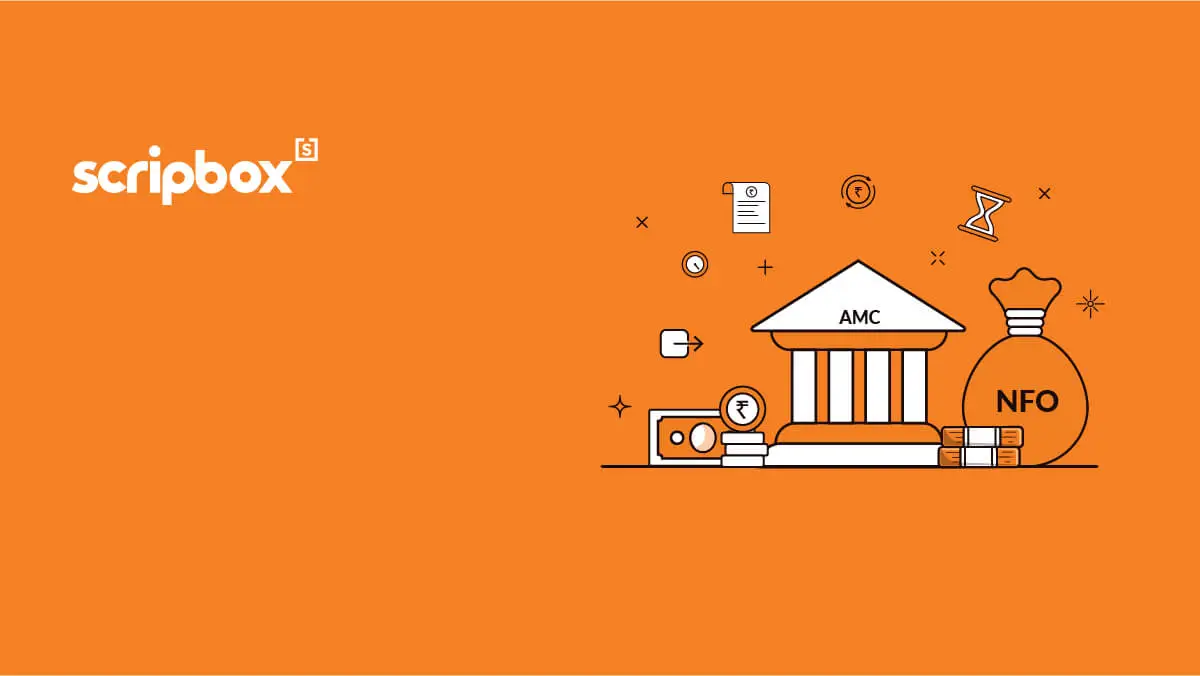A wide range of investment products is available for savings for different financial goals like children’s education, marriage, home buying, etc. Some of them are traditional investment products are Unit Linked Insurance Plans (ULIPs), endowment insurance policies, fixed deposits, etc. With the evolution of financial markets, mutual funds have emerged as an investment option for planning towards financial goals. In this article, we will discuss child plan and child fund along with the difference between child plan vs child fund.
What is a Child Plan?
A child plan is a tailor-made insurance cum investment product that helps to secure the child’s future. There are two components in the child plan, namely investment and insurance. The insurance component is to protect the child from unfortunate events like the demise of the parent, where the child gets a certain annual payment if such an event happens. The investment component helps to meet the child’s financial needs by the accumulation of money.
This life insurance product assures that the child will get financial support even if something untoward happens to the parents. A child insurance plan offers life cover and provides the flexibility of payouts at the important stages of a child’s life. Moreover, these plans are made keeping in mind the fact that life is unpredictable. Thus, a child plan helps build a corpus to help parents manage future expenses like children’s education. Also, the corpus can be used for events like the sudden demise of parents.
Types of Child Plans
There are two types of child plans –
- Child ULIPs – ULIP plan is a combination of protection and investment. It has certain risks associated because the investment is made in market-linked instruments. In other words, the amount paid towards the premium is partially invested in equity or debt instruments based on the choice of the policyholder.
- Child Endowment Plans – These are traditional insurance plans which are a mix of insurance and savings. These plans do not have any risk, and also returns are fixed. In other words, the amount paid towards premium is invested in debt instruments where the choice of the debt instrument is vested with the company.
explore our article on Best Child Plans in India
How Does Child Plans Work?
There are many plans available in the market by different companies. To decide which plan to choose, the investor should know the actual amount required at the end of the term based on their financial goal. Hence, based on this, they can decide the actual sum insured or the insurance coverage required. The investor has to make an application to know the premium amount based on the sum insured. Based on this, the investor can choose the type of policy to invest in.
As mentioned above, there are two types of policies, namely, child plan ULIPs and child endowment plans. The ULIP plan allows investors to decide which instruments they wish to invest their money (premium), while in the endowment plan, the company itself decides to invest in debt instruments.
After finalising the plan, the investor can opt for either lump sum payments or regular periodic payments towards the premium. Once the payment frequency is decided, the policy commences when the premium payment starts. Also, the child becomes the nominee of the policy. However, if an unfortunate event occurs where the policyholder(parent) dies, the company will pay the portion of the maturity amount to the child (being the nominee) annually till maturity. This will help the child to manage their expenses seamlessly. Further, all the premiums payable after death shall be waived off. Upon maturity, the complete sum assured is paid to the child.
On the other hand, if the parent outlives the policy term, the complete sum assured is paid to the child at the end of the policy term. Also, if there is any emergency requirement, parents can withdraw a partial amount from the corpus. Therefore, a child plan guarantees financial stability to the family where parents can work towards other aspects of the child’s growth and development.
What is a Child Fund?
Child fund or Children mutual fund is an open-ended mutual fund scheme available for investment for children-specific goals. These funds have become a common investment option due to the rising cost of education and other essential expenses. Parents or Legal guardians can invest in this fund on behalf of their children. The fund accumulated can be utilised towards child-specific goals like children’s education, marriage or relocation expenses, etc.
Child fund has a minimum lock-in period of 5 years or until the child becomes an adult (18 years), whichever is earlier. A child fund invests in both equity and debt portfolios. If the portfolio invests 60% of its funds in equity instruments, it is termed an equity mutual fund. Similarly, if the portfolio invests 60% of its funds in debt instruments, it is a debt mutual fund. Therefore, investors can choose higher equity or higher debt depending on their understanding of risk and time horizon.
The major objective of this fund is to create a source of finances for necessary expenditures of children. This fund acts as an alternative to long term investment options as investors cannot withdraw the money from this fund prematurely as it charges a heavy exit penalty. Most fund houses charge a penalty of 4% if the investor decides to liquidate the fund before 5 years.
In addition, parents investing in these schemes on behalf of their children can avail an exemption up to INR 1.5 lakhs under Section 80C of the Income Tax Act, 1961. Also, the interest accrued from child plans is exempt from tax. However, upon maturity, tax is levied on the maturity amount.
Who Should Invest?
Child funds are suitable investment options for those who want to secure their child’s financial future. It provides tax benefits, ensures wealth accumulation, and levies heavy penalties against early withdrawals, which deters investors from liquidating from the fund. Also, these are tailor-made investment plans that help parents to create a substantial corpus. This fund is also suitable for parents looking for tax savings as one of their financial goals.
The child plan offers customisation of the portfolio where the investor can choose between equity or debt. It also brings discipline among investors as they have to stay invested for the long term. Moreover, after the child turns 18 years, the authorization is handed over to them, providing them with the flexibility to use the money. However, they have to complete the KYC to gain access to the fund. Thus, this fund can help children in building their careers by accumulating a substantial corpus amount.
Difference Between Child Plan and Child Fund
The following are the fundamental differences between child plan and child fund –
Insurance Coverage
The child plan, a life insurance plan, carries a default insurance cover for both child and parents. On the other hand, a child fund is a mutual fund that is an investment product. It does not provide any insurance cover. To cover the risk of future uncertainties, it is important to have insurance cover and invest a small portion of savings in mutual funds.
Choice of Investment Portfolio
Child plans do not have any flexibility in the investment portfolio. Most of them have three basic options based on risk profile – conservative, moderate and aggressive. On the other hand, a child fund is a mutual fund where investors can choose from a broad spectrum of schemes (either equity or debt) based on their risk tolerance levels and financial goals.
Risk Profile Alignment
In a child plan, investors can broadly align their risk profile to the portfolio. While in children’s mutual funds, it allows investors the flexibility to choose their portfolio mix, which is aligned with their risk profile and financial goals.
Performance
Child plans have a conservative investment strategy as the primary objective of the plan is to provide insurance to the policyholder. However, there are investment cum insurance plans available for investors. Hence, any returns from these plans are considered to be secondary. On the other hand, a child fund can be a preferred option to achieve the desired financial goal like children education, marriage, etc. Also, professional fund managers manage money on behalf of the investors. Thus, investment decisions in the mutual fund portfolio are based on extensive research.
Premium Waiver Benefit
When the policyholder passes away within the policy period, the plan doesn’t end in a child insurance plan. The insurance company waives off the premiums for the remaining period. Upon maturity, the child receives the entire sum assured. Hence, the child does not suffer in case of the untimely death of their parents. On the contrary, in a child fund, when the investor passes away during the tenure of the fund, the nominee(child) receives the corpus accumulated. Thus, this is the end of the relationship between the fund and the child. The company pays the lump sum amount to the nominee.
Partial Withdrawal
Child plans give the flexibility to withdraw funds whenever required, but requirements must be related to the child. However, partial withdrawal is allowed after certain years, depending on the plan. Hence, before opting for an insurance plan, it is always better to check the lock-in period with the service provider. Conversely, it is not possible to withdraw from mutual fund investments if there is a lock-in period. In case the investor wants to withdraw, they have to pay a heavy penalty.
Child Plan vs Child Fund Which is a Better Investment Option?
Both child plan and child fund have their share of advantages and limitations. Choosing between the two completely depends on the investor’s financial objectives and time horizon. For instance, if you need funds after 5 or 6 years, then a child fund is more suitable as child insurance plans have a long maturity period. Also, a shorter lock-in period of 5 years in a child fund helps investors accumulate corpus to meet the child’s financial needs. Furthermore, those who properly understand risk and bear market fluctuations can invest in an equity-oriented portfolio.
Both the schemes provide tax saving benefits up to Rs. 1.5 lakh under Section 80C of the Income Tax Act,1961 while investing. At the same time, child insurance plans provide additional maturity benefits, i.e., tax-free under Section 10(10D). In contrast, child mutual funds attract capital gains tax as per the equity or debt taxation rules.
Besides this, it is unnecessary to opt for a child plan or child fund necessarily to save for children’s financial goals. You can always make a goal-based investment by identifying low-cost mutual funds. For protection, a term insurance plan is available that will help secure the child’s financial needs in your absence. Therefore, you can always consult a financial planner to help you plan for your financial goals and make a well-informed decision.
Related Articles
- Confused if your portfolio is performing right enough to meet your goals?
- How long have you been investing in mutual funds?
- What is your current portfolio size?
- What is your approximate annual household income?
- Your profile does not qualify for a call with a Financial Expert.
- What is a Child Plan?
- How Does Child Plans Work?
- What is a Child Fund?
- Difference Between Child Plan and Child Fund
- Child Plan vs Child Fund Which is a Better Investment Option?























Show comments